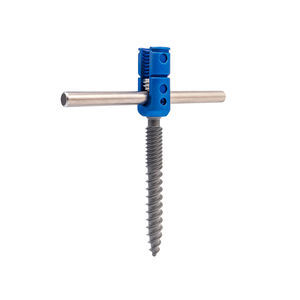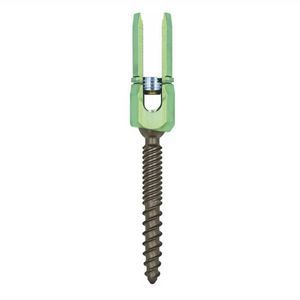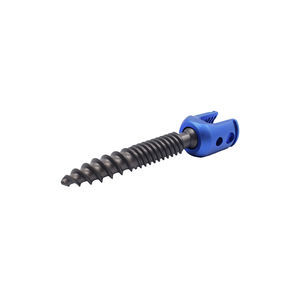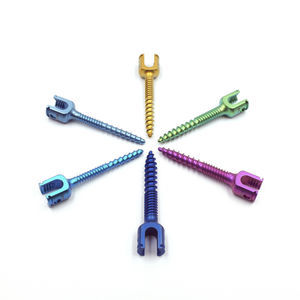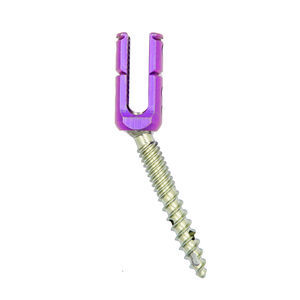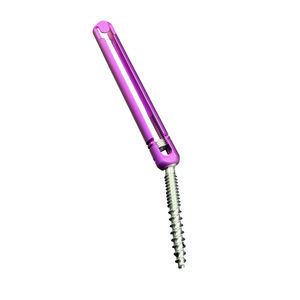
- Secondary care
- Orthopedic surgery
- Monoaxial pedicle screw
- Chongqing FWS Medical Devices
- Products
- Catalogs
- News & Trends
- Exhibitions
Thoraco-lumbar pedicle screw monoaxialtitanium
Add to favorites
Compare this product
Characteristics
- Applications
- thoraco-lumbar
- Screw features
- monoaxial
- Materials
- titanium
Description
The product consists of pedicle screw, transverse connector, orthopedic rod, connector and hook assembly. It is made of TC4 titanium alloy material that meets the requirements of GB/T13810-2017 standard. The surface of the product is black-gray anodic oxidation and color anodic oxidation. The packaging is divided into two types: sterilization packaging and non-sterilization packaging. The sterilization period is 5 years.
Instructions
Pre-drilling of the pedicle bone path: According to the positioning requirements of the pedicle screw, a hole drill is used to drill a hole 10mm deep at the nail entry point, and then a flat-head Kirschner wire with a diameter of 1~1.5mm is used to pre-drill and advance by hand. Always keep the probe parallel to the intervertebral space and not pass through the bone canal. If the probe is inside a normal pedicle, there should be a substantial noise. Moving the Kirschner wires up and down at this time can feel the surrounding bony structures. Take out the Kirschner wire, and select the corresponding pedicle screw according to the length of its entry into the bone canal. Pedicle screw placement: For spinal fractures, two pairs of screws are usually implanted in the adjacent vertebrae above and below the diseased vertebra, while for spondylolisthesis, a pair of lifting screws are added to the diseased vertebrae. After the pedicle bone is protruded, the pedicle screw is screwed into the pedicle screw to correct the deformity. In addition, it should be noted that the screwed-in lifting screw must be on the same plane with the two vertebral bodies after the correction of the diseased vertebra, so that the connecting rod can be installed smoothly.
Other Chongqing FWS Medical Devices products
Spinal fixation system
Related Searches
- Bone plate
- Compression plate
- Metallic compression plate
- Locking compression plate
- Titanium compression plate
- Distal compression plate
- Compression bone screw
- Interbody fusion cage
- Orthopedic surgery surgery set
- Metallic compression bone screw
- Proximal compression plate
- Forearm compression plate
- Mid-shaft compression plate
- Arthrodesis nail
- Lateral compression plate
- Tibia compression plate
- General purpose compression bone screw
- PEEK interbody fusion cage
- Radius compression plate
- Humeral compression plate
*Prices are pre-tax. They exclude delivery charges and customs duties and do not include additional charges for installation or activation options. Prices are indicative only and may vary by country, with changes to the cost of raw materials and exchange rates.


